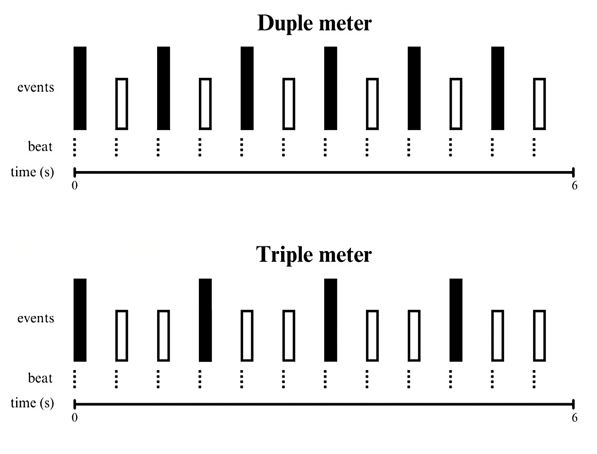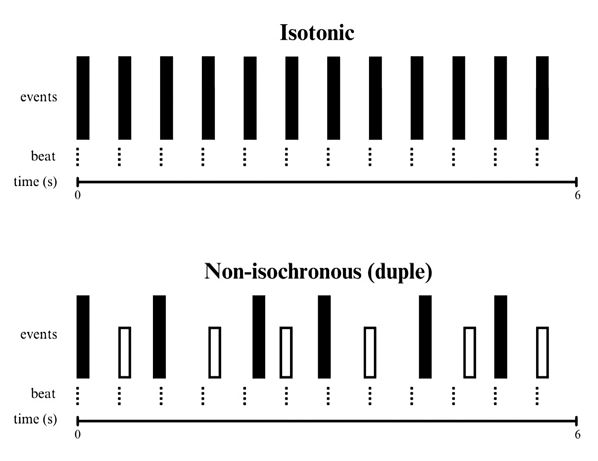What music perception abilities do people have that animals do not?: the topic of two recent studies led by UPF
What music perception abilities do people have that animals do not?: the topic of two recent studies led by UPF
Humans are able to identify rhythmic and harmonic patterns in music quicker and more easily. While other species, such as rodents, can detect rhythmic sequences, they are unable to discriminate the underlying metres in certain cases, according to studies led by UPF’s Center for Brain and Cognition (CBC).

Music, along with language, is one of the primary forms of human expression, present in all cultures throughout history. But not only humans perceive music. A diverse array of animal species are also capable of doing so, as numerous studies have shown. Nonetheless, one of the key challenges that continues to face science is understanding which musical abilities are exclusively human and differentiate us from other species, to which end the Center for Brain and Cognition (CBC) at UPF is leading research to determine what characterises humans’ musical brains.
So far, the research headed by the CBC, which compares differences in the capacity to perceive music across humans and animals, has reached two main conclusions. Firstly, it has determined that humans are quicker and more easily able to identify rhythmic and harmonic patterns in music than other animal species. Secondly, it has shown that while animals are capable of identifying rhythmic sequences, the repetition of sounds over certain time intervals, they are incapable of discerning metre, the structure by which certain rhythms are organised (those which are not randomly organised) into bars displayed graphically on a stave.
These are the main contributions of two recent papers, the principal investigator for which is Juan Manuel Toro Soto, director of the Language and Comparative Cognition Group (LCC) at UPF’s CBC. The first of these articles was published in the journal Animal Cognition in November 2023, together with Paola Crespo (CBC-UPF) and other researchers with links to research centres in France and Sweden (DIS Study Abroad in Scandinavia, Cognitive Neuroimaging Unit, INSERM, CNRS, Université Paris-Saclay, CEA and NeuroSpin Centre). The second paper, published in March 2024 in the Journal of Comparative Psychology, was written by J.M. Toro Soto (UPF, ICREA), along with fellow CBC-UPF researcher Ferran Mayayo.
Both studies were conducted on rodents, due to the scientific interest in studying the ability to perceive music among animals that do not communicate verbally, as in the case of most birds, on which previous studies had been performed in this field.
According to Juan Manuel Toro Soto (UPF), humans’ ability to perceive music is “far superior to what has been observed in other animals”
J.M. Toro Soto, the principal investigator of both studies (UPF), summarises their main objectives and conclusions as follows: “Music, along with language, is one of the abilities that defines us as humans. The aim of these studies is to gain further insight into how humans differ from other animals in terms of musical perception. The first study shows our readiness to detect musical structures and use tonality, which is far superior to what has been observed in other animals. The second study demonstrates the difficulties that other species have to follow metrical organisation, something that humans do easily.”
The first study compares the ability to perceive music across people and rodents
The purpose of the first study was to determine whether people’s ability to perceive musical patterns is exclusively human or whether it is related to abilities developed by other animal species. To this end, the research compared the music perception abilities of both humans and rodents, across a sample of 32 people (23 women and 9 men under the age of 22, with no prior musical training) and 32 five-month-old rodents. Several experiments were conducted, in which both structured musical excerpts from sonatas by Mozart and other non-structured excerpts were played to both the people and rodents. The experiments also involved listening to the two types of excerpts in two different situations: one with a constant tonality and another with changes in tonality.
Based on these experiments, it has been concluded that people quickly detect after just a few attempts whether the pieces of music are structured or not. Rodents, on the other hand, require hundreds of attempts to differentiate between the two types of pieces –structured and unstructured– and are unable to achieve the same level of precision as humans. Furthermore, in the case of people, changes in musical tonality helped improve their ability to discriminate between structured and randomly arranged fragments. With the rats, the variations in tone made the task more difficult and prolonged the time required to distinguish between musical excerpts with and without a structure.
The second study analyses whether rodents are capable of detecting musical metres
The aim of the second study was to further analyse the differences in the ability to perceive music across humans and rodents, investigating whether these animals are capable of metre induction. In this case, one sole experiment was conducted with 40 three-month-old female rodents, to determine whether they were capable of discerning different metres.
The experiment confirmed that this animal species has the ability to identify repetitive rhythmic sequences, but was unable to demonstrate its ability to discriminate between the different metrical structures underlying certain rhythms. In the experiments, the rodents were unable to differentiate between different metres (e.g. two or three beats per bar) and between rhythms with or without a metrical structure. They could only determine whether certain rhythmic sequences regularly repeat or not.


While both studies serve to further our knowledge of the differences in the ability to perceive music across humans and animals, J.M. Toro Soto cautions that “much research is still required to understand our musical brain.”
Reference article:
Crespo-Bojorque, P., Cauvet, E., Pallier, C. et al. Recognizing structure in novel tunes: differences between human and rats. Anim Cogn 27, 17 (2024). https://doi.org/10.1007/s10071-024-01848-8
Mayayo, F., & Toro, JM (2024). Using isochrony, but not meter, to discriminate rhythmic sequences in rats (Rattus norvegicus). Journal of Comparative Psychology. Advance online publication. https://doi.org/10.1037/com0000376
